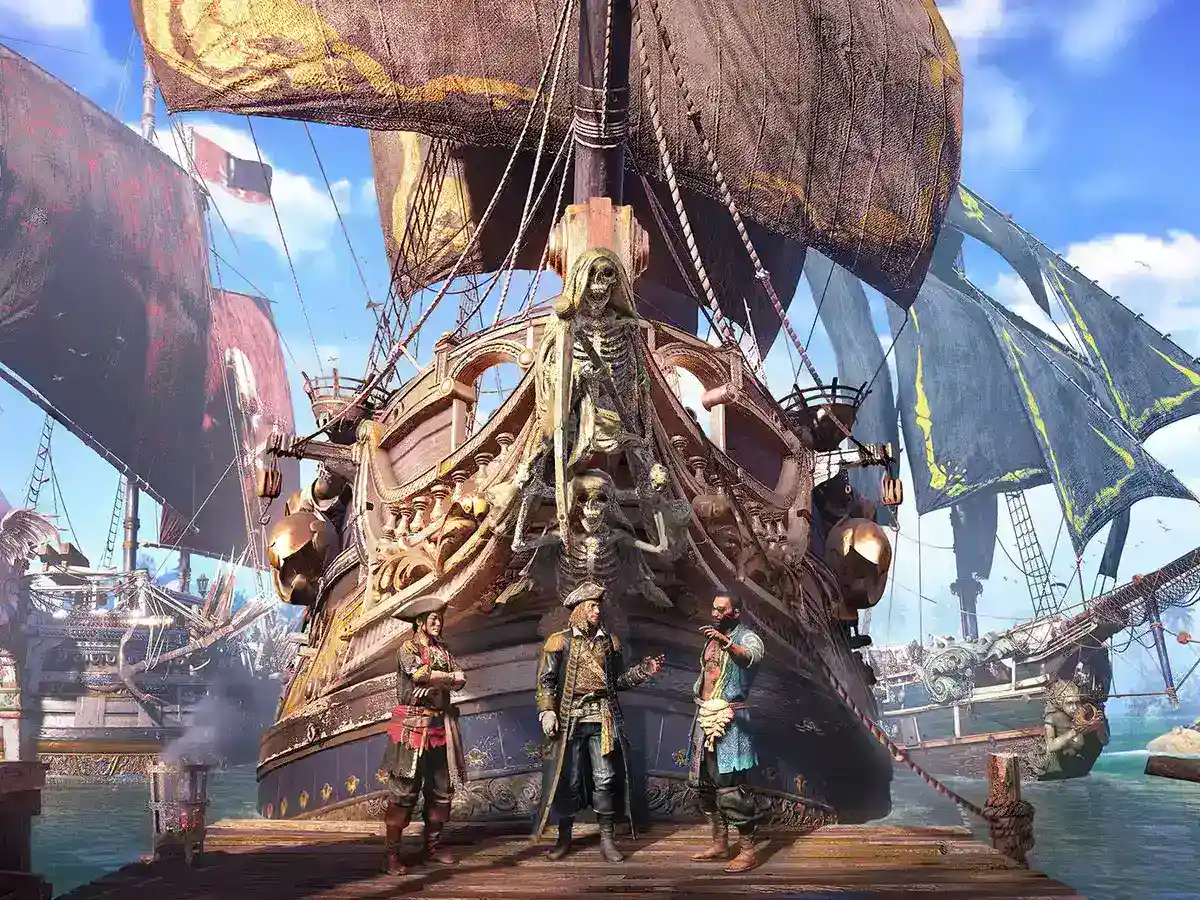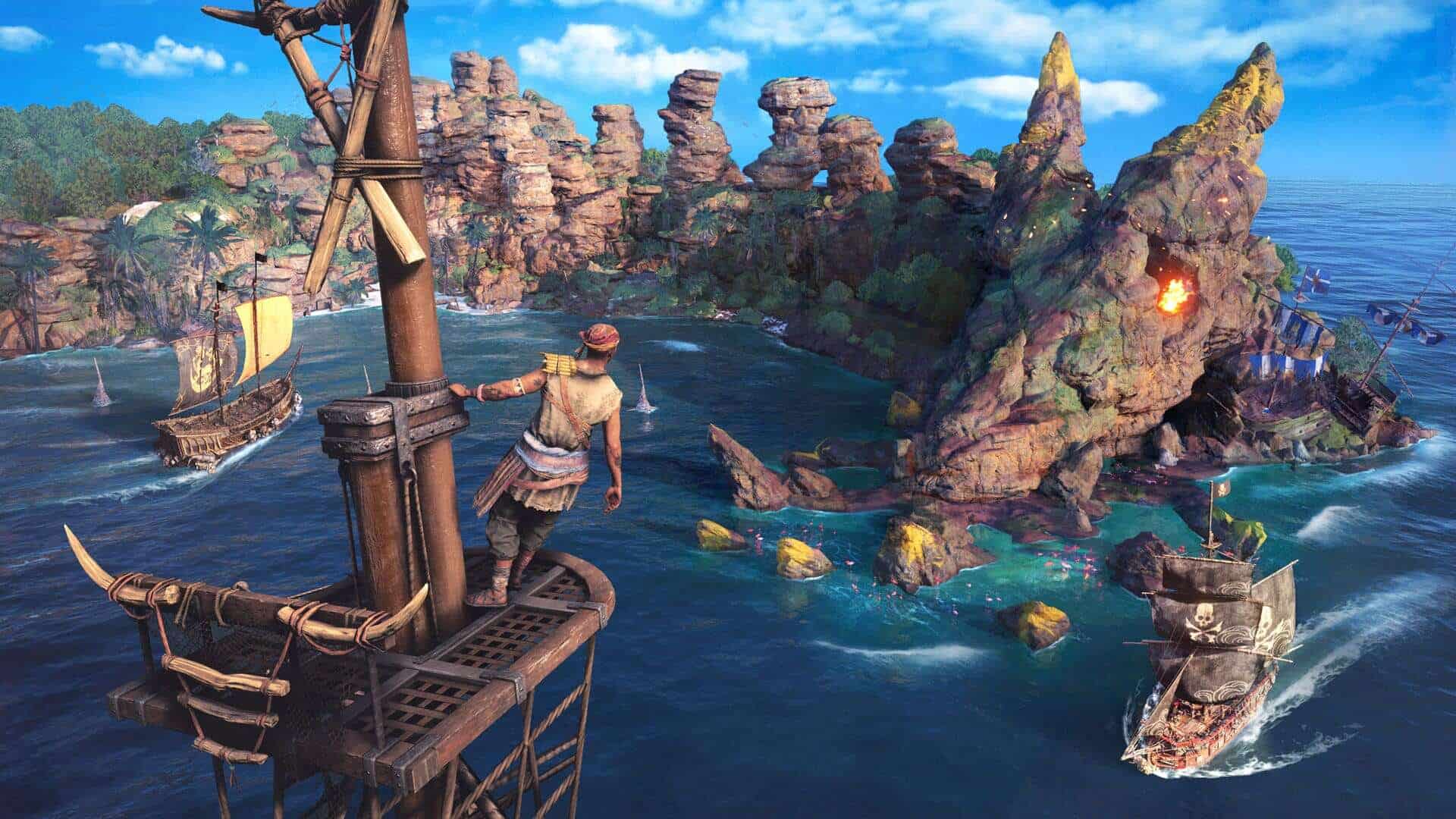Skull and Bones’ fundamental idea, a fluid, multiplayer naval sandbox, is too good an idea with too much potential that, for all its troubled launch, merits a remake and a revival. Drawing inspiration from the visceral ship-to-ship combat of Assassin’s Creed IV: Black Flag and the open-ended pirate adventure of Sid Meier’s Pirates!, the original idea promised an ever-changing, living sea playground where one creates one’s very own pirate lore.
But years of development struggle, live-service drift, and design bloating have obscured this vision, resulting in a middling launch that couldn’t quite keep the depth and agency players crave.
By refocusing on sandbox freedom, streamlining systems, and adopting fair monetization, Ubisoft (or any visionary studio) could potentially restore the essence of Skull and Bones, turning it into the ultimate pirate sim that has been yearned for since Black Flag and Sid Meier’s classic ages.
Origins of the Skull And Bones Concept

Originally conceived in 2013 as a DLC for Assassin’s Creed IV: Black Flag, Skull and Bones evolved into a standalone game under the leadership of Ubisoft Singapore. It heavily drew on the naval combat that enthralled millions in AC4. Early prototypes emphasized dynamic ship-to-ship combat, customizable vessels, and an emergent pirate economy, which struck deeply with fans hungry for a modern interpretation of Sid Meier’s Pirates!
Several scope changes, from a Caribbean spin-off to a fictional Hyperborea environment, and finally to an East African/Indonesian environment, reflect the vision but also the lack of vision that plagued development.
The Resonance of Pirate Sandbox Freedom

Nostalgia and Player Agency
Sid Meier’s Pirates! (2004) remains a standard for open-world nautical adventure, praised for its clever balance of trade, combat, and narrative mini-games that invited player agency and emergent storytelling.
Players today, yearning for the same experience, lobbied eagerly for a next-gen pirate sandbox, petitioning developers to reimagine the same feeling of freedom without compromising depth or gloss
Community Demand for a True Pirate Simulator
On various forums and subreddits, individuals were complaining that Skull and Bones strayed from its promise, one of them even asking out: “Guys, all we want is Sid Meier’s Pirates! in a modern engine.”
This grassroots campaign highlights that the thirst for a true, sandbox pirate RPG never went away.
Where the Execution Fell Short
Live-Service Creep and Design Overload
Instead of streamlining the core naval gameplay, Skull and Bones strayed into the live-service model, introducing crafting mini-games, overly complicated progression systems, and in-game stores, elements that detracted from the pirate fantasy and infuriated players.
The result was an “arcade-y interpretation of a pirate’s existence” with no narrative repercussions, meaningful choices, or the feeling of improvisation that creates great sandbox experiences.
Mixed Critical Reception
Reviews praised ship battle graphics but criticized clunky menus, slow launch, and token on-foot exploration, terming it more a naval simulator than a full pirate adventure. Having an average Metacritic rating of around 59 and player numbers being disappointing, the launch decisively differed from its decade-long hype.
Reimagining for a Second Life
Reviving the Skull and Bones concept, upcoming versions need to hold to three pillars:
1. Emphasize Sandbox Freedom
- Dynamic Encounters: Procedurally generated pirate bases, hidden coves, and ports encourage exploration and emergent narrative.
- Strong Economy: A dynamic commodity market, such as rum, sugar, and muskets, establishes meaningful trade routes and pirate rivalries.
2. Simplify and Refine Core Mechanics
- Ship Customization: A modular upgrade system for hulls, sails, and weapons enables players to craft unique vessels without UI complexity overload.
- Combat Focus: Smooth naval physics and AI captains make each sea battle cinematic and tactical, similar to the award-winning Black Flag battles.
3. Fair, Player-Centric Monetization
- Cosmetic-Only Shop: Make all game content earnable in-game, avoiding pay-to-win pitfalls, and building community goodwill.
- Seasonal Content as Narrative: Abandon grindtastic battle passes and embrace story-driven seasons with new territories, legendary pirates, and community challenges.
Final Thoughts
The potential of Skull and Bones, a breathing, living pirate sandbox in which player creativity reigns, remains compelling. By again emphasizing freedom, streamlining mechanics, and pushing for fair monetization, the initial idea can not only deserve but demand another chance.
With hard-won lessons from its checkered past and insight from genre classics, a rethought Skull and Bones could finally deliver the pirate epic players have been craving, establishing itself as the definitive open-world naval classic. And with Skull and Bones’ Year 2 coming around, now could be a good time to revisit a great idea.
More must-reads:
- Watch: Phillies LF Kyle Schwarber extends impressive streak vs. Guardians
- Rafael Devers shows why Red Sox should consider keeping him at DH
- The 'Most 30-point NBA playoff games before age 22' quiz
Customize Your Newsletter
 +
+
Get the latest news and rumors, customized to your favorite sports and teams. Emailed daily. Always free!








